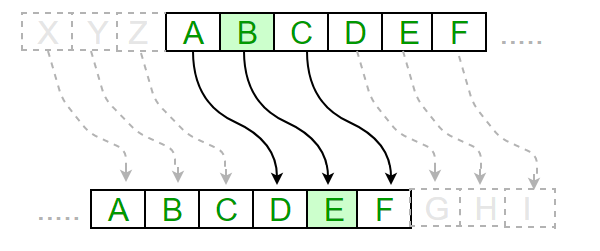In the ever-evolving landscape of cryptography, the allure of classical ciphers persists, not merely as relics of antiquity, but as bastions of fundamental principles that underpin modern encryption. Among these venerable techniques lies the Caesar Cipher, a straightforward yet elegant method of encryption that shifts letters in the alphabet by a fixed number of positions. Imagine this process as a dance, where each letter gracefully glides to a new position whilst maintaining the rhythm of its formation. However, a modified approach employing two keys amplifies this rhythm into a symphony of complexity and intrigue.
The concept of using two keys serves as an enriching layer in the encryption process, akin to a painter wielding two brushes to craft a multidimensional masterpiece. The first key is often designated for the initial shift, while the second key further transforms the result, imbuing it with additional depth. This dual-key mechanism not only enhances security but also embodies the notion of duality—where simplicity finds harmony with complexity.
To embark on this journey of encryption, it is paramount to understand the mechanics underlying the Caesar Cipher. The basis of the original cipher relies on a uniform shift across the alphabet. As an example, if the shift is three, the letter A would metamorphose into D, B into E, and so forth. The scope of this cipher, however, is markedly limited in its defense against frequency analysis, revealing its vulnerabilities. Thus arises the necessity for enhancement through the dual-key modification.
Begin by selecting two distinct keys for the encryption process. For illustration, let us ascribe the keys as +3 and +5. The application of these keys will pivot around alternating letters of the plaintext. The first letter of your message will shift according to the first key, while the second will adhere to the second key, continuing this alternating pattern throughout the text—much like a waltz where two partners take turns leading.
Consider the plaintext: “HELLO WORLD”. Under the auspices of our proposed keys, the encryption process unfurls as follows:
- H (3 positions forward) transforms into K
- E (5 positions forward) transforms into J
- L (3 positions forward) transforms into O
- L (5 positions forward) transforms into Q
- O (3 positions forward) transforms into R
- (space remains unchanged)
- W (5 positions forward) transforms into B
- O (3 positions forward) transforms into R
- R (5 positions forward) transforms into W
- L (3 positions forward) transforms into O
- D (5 positions forward) transforms into I
The resultant encrypted phrase becomes “KJ OQR BROW OI”. This base transformation elucidates the impact of employing dual keys, cementing not only the strength of the encryption but also the perturbation of frequency analysis through diversification of letter shifts.
While the process may appear straightforward, the ramifications of this dual-key design extend to amplifying security. Given that each letter undergoes distinct transformations dictated by different keys, it becomes markedly more challenging for a potential adversary to decode the message through conventional means. In an era where digital communications reign supreme, introducing layers of complexity serves as a significant deterrent against unauthorized disclosures of sensitive information.
Furthermore, this cipher can be tailored in various ways to suit the requirements of diverse encryption tasks. The keys can differ in their values depending on the sensitivity of the data. Utilizing larger shifts expands the possible variations exponentially, adding another dimension to the encryption strategy. Envision a labyrinth, where each twist and turn leads to unexpected paths; the larger the shift, the more intricate the maze.
Moreover, in the realm of collaborative communications, where multiple participants share a message, a sophisticated implementation of the dual-key Caesar Cipher can be employed to diversify access. Each participant may be provided with a unique pair of keys enabling them to decrypt messages while denying such access to outsiders—conjuring images of secret societies with coded language and shared secrets.
Nevertheless, one must remain vigilant about the inherent limitations of this approach. The dual-key Caesar Cipher, while more secure than its singular counterpart, does not reach the heights of complexity offered by modern symmetric or asymmetric encryption algorithms. As the digital battlefield evolves, adversaries may eventually uncover patterns through deeper analysis of the encrypted messages. Therefore, this method should be integrated within a broader encryption framework that combines multiple strategies for the desired level of security.
In summation, employing a modified Caesar cipher to encrypt with two keys unveils an artistic amalgamation of simplicity and complexity. This approach, while steeped in tradition, resonates with contemporary cryptographic principles, offering an intriguing avenue for those seeking to enhance security through diversification. By embracing such dynamic methodologies, one not only preserves the heritage of cryptographic practices but also fortifies the sanctum of privacy in an increasingly interconnected world. The dance of the letters—once a simple shift—now flourishes into a ballet of secure communication, safeguarding messages with elegance and resilience.








Leave a Comment